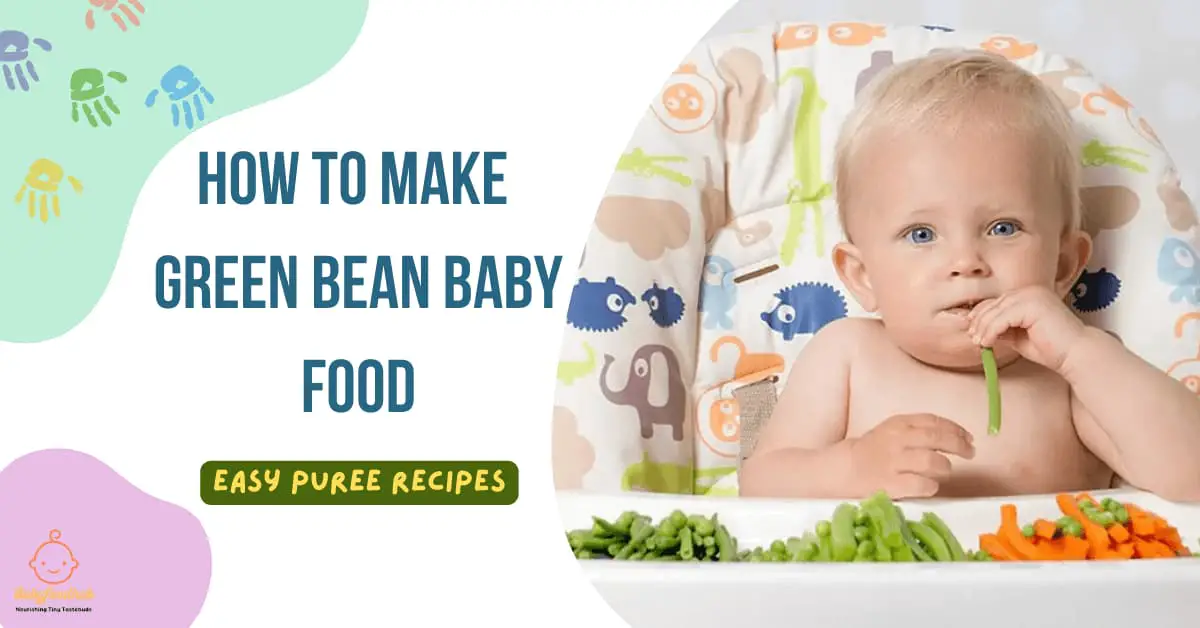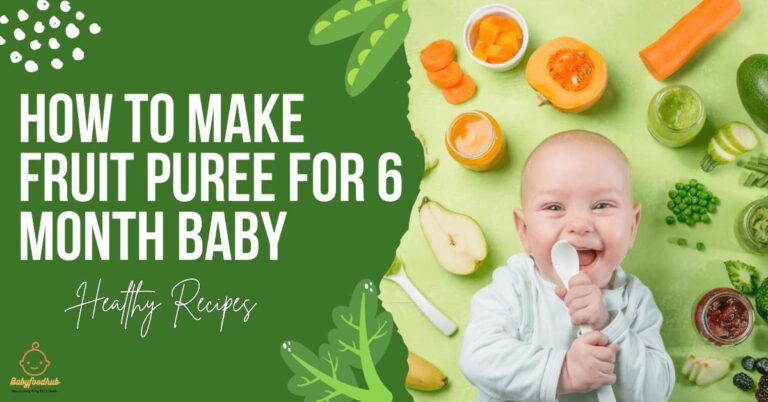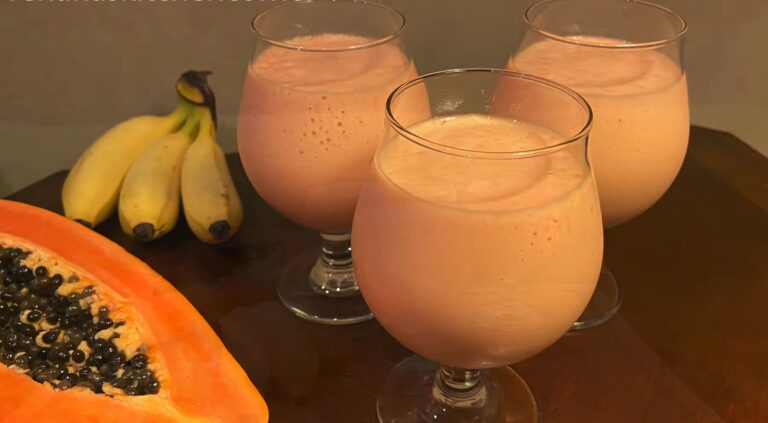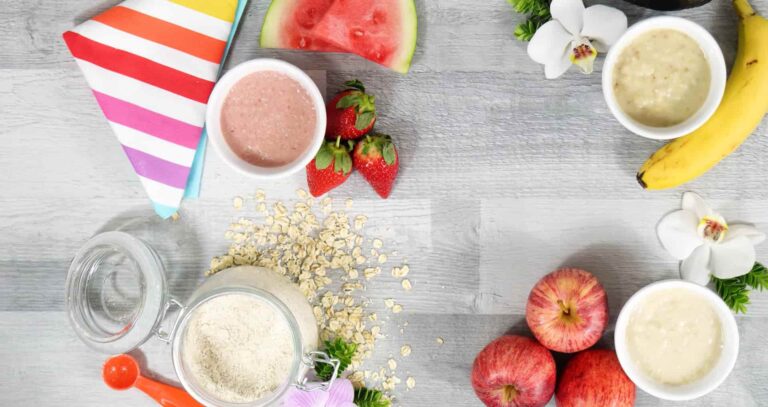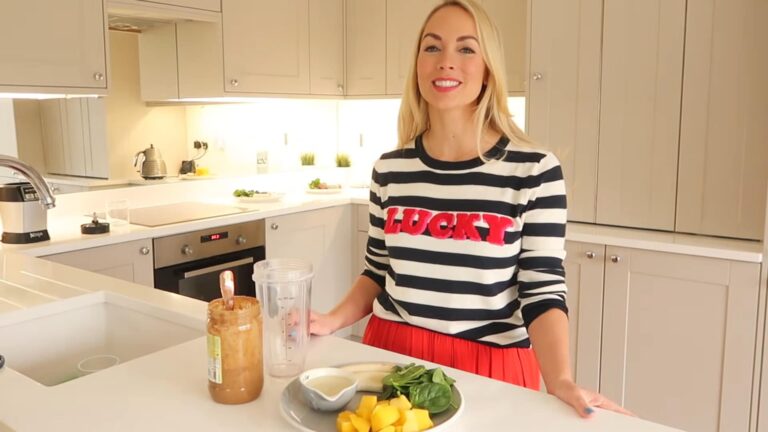how to make green bean baby food?
In this blog, you will learn the simple steps on how to make green bean baby food, ensuring your little one gets all the benefits of this healthy vegetable. We will also discuss when to introduce green bean puree to your baby and offer tips for storing and serving homemade baby food.
So, let’s get started and learn how to make delicious and nutritious green bean baby food at home.
Benefits Of Green Bean Baby Food
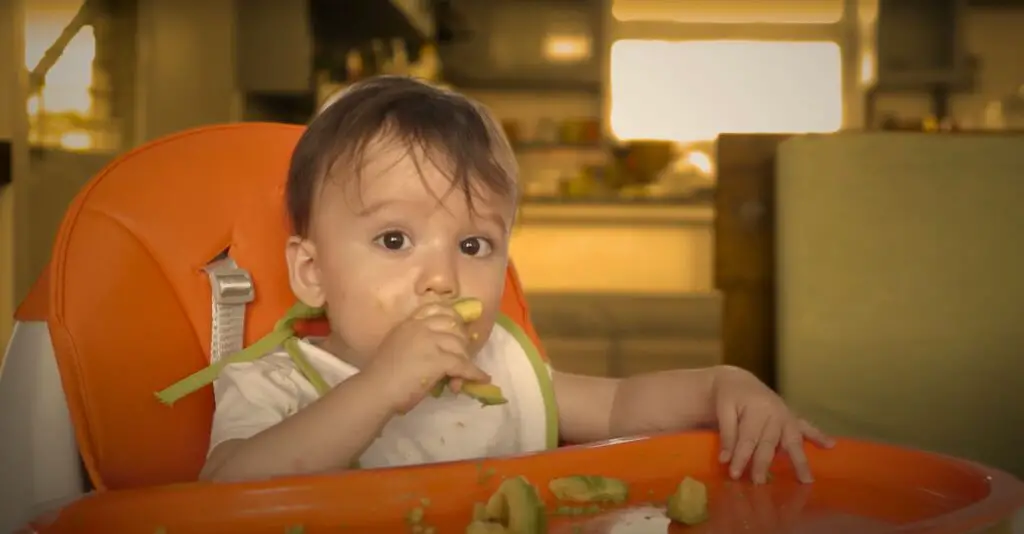
Discover the numerous benefits of feeding your baby homemade green bean baby food. Learn how to easily make this nutritious and delicious puree at home with our simple step-by-step guide. Your baby will love the taste, and you’ll love knowing exactly what they’re eating.
Nutrient-Packed Meal For Your Baby’s Healthy Growth:
Green bean baby food is an excellent choice for providing your little one with a nutrient-packed meal that supports their healthy growth. Packed with essential vitamins and minerals, green bean baby food offers a range of benefits that contribute to your baby’s overall well-being.
Here are some key points to consider:
- High in vitamins: Green beans are rich in essential vitamins such as A, C, and folate. These vitamins play a crucial role in supporting your baby’s immune system, promoting healthy cell development, and aiding in the absorption of nutrients.
- Abundance of minerals: Green beans are a fantastic calcium, iron, and potassium source. Calcium is essential for strong bones and teeth, while iron supports healthy blood circulation and oxygen transport. Potassium helps maintain proper hydration and aids in developing nerve and muscle function.
- Fiber content: Green beans are a great source of dietary fiber, promoting healthy digestion and regular bowel movements in your baby. It helps prevent constipation and keeps their digestive system functioning optimally.
- Antioxidant properties: Green beans contain antioxidants that help protect your baby’s body against harmful free radicals and reduce the risk of chronic diseases.
- Low allergenicity: Green beans have a low allergenic potential, making them a safe choice for introducing solid foods to your baby’s diet. They are less likely to cause any allergic reactions compared to other foods.
Introducing your baby to green bean food provides them with a nutrient-packed meal supporting their healthy growth. Its rich vitamin and mineral content and low allergenicity make it a fantastic choice for promoting your baby’s overall well-being.
Choosing And Preparing Fresh Green Beans
Discover how to choose and prepare fresh green beans for homemade baby food. This simple guide will help ensure your little one gets the best nutrition from this delicious vegetable.
Selecting The Perfect Green Beans For Baby Food
Choosing the right green beans for baby food is crucial to providing your little one with a nutritious and tasty meal. Here are some tips to help you select the perfect green beans for your homemade baby food:
- Opt for organic options, if possible: Organic green beans are free from harmful pesticides and chemicals, making them healthier for your baby. Look for certified organic green beans to ensure their quality.
- Look for a vibrant green color and firm texture: When choosing green beans, opt for those with a vibrant green color and are firm to the touch. Avoid dull or yellowish beans, as they may be less fresh and nutritious.
Cleaning And Trimming The Green Beans
Cleaning and trimming the green beans properly is important before preparing the green beans for baby food. Here’s what you need to do:
- Washing them thoroughly to remove any dirt or impurities: Start by washing the green beans under cool running water to remove any dirt or impurities. Gently rub the beans with your hands to ensure thorough cleaning.
- Removing the ends and strings from the beans: Once the green beans are washed, it’s time to remove them. Hold a bean firmly between your fingers and snap off both ends. Some green beans may also have strings along their edges, which must be removed. Use a paring knife or fingers to pull and discard these strings gently.
By following these steps, you can ensure that your green beans are clean, fresh, and ready to be cooked for your baby’s homemade food.
Cooking Methods For Green Beans
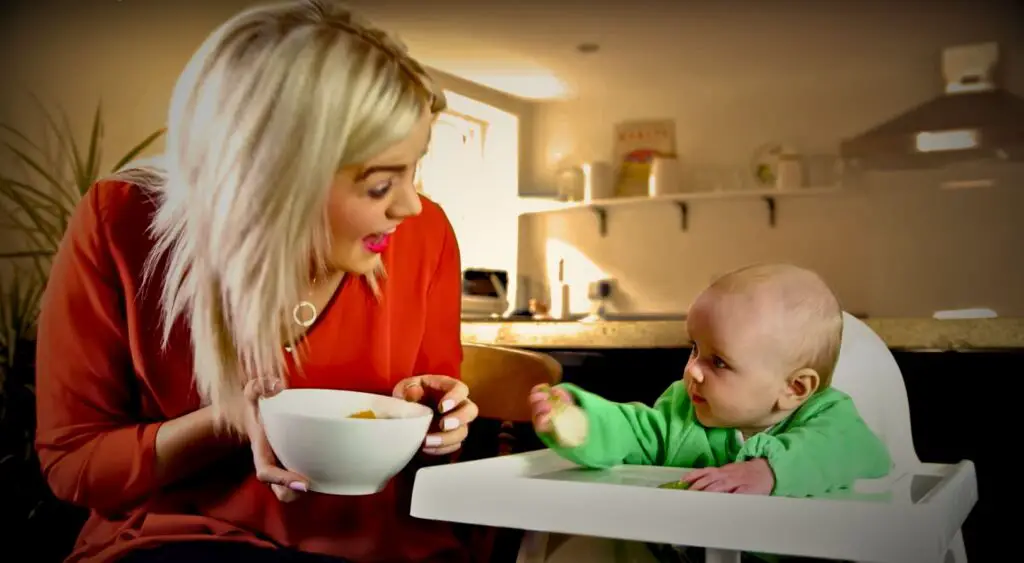
Discover easy and healthy cooking methods for making green bean baby food. From steaming and boiling to pureeing and mashing, these techniques provide nutritious options for your little one.
Green beans make a nutritious and delicious addition to your baby’s diet. When it comes to preparing green bean baby food, there are a few cooking methods you can choose from to ensure optimal nutrient retention and a soft texture that is easy for your little one to eat.
Let’s explore two popular cooking methods: steaming and boiling.
Steaming Green Beans For Optimal Nutrient Retention:
- Using a steamer basket or a microwave-safe dish ensures that the green beans retain their nutrients during cooking.
- To steam the green beans, follow these steps:
- Place the green beans in a steamer basket or a microwave-safe dish.
- Add a small amount of water to the pot or dish, enough to create steam.
- Cover the pot or dish with a lid or microwave-safe wrap.
- Steam the green beans until they are tender but not overcooked. This usually takes about 5 to 7 minutes.
- Steaming helps the green beans retain more vitamins and minerals than other cooking methods, making it an excellent choice for your baby’s food.
Boiling Green Beans As An Alternative Cooking Method:
- Boiling is another simple and effective cooking method for green beans.
- To boil the green beans, follow these steps:
- Place the green beans in a pot and add enough water to cover them.
- Bring the water to a boil over medium-high heat.
- Reduce the heat to low and simmer the green beans until soft. This typically takes about 8 to 10 minutes.
- Once cooked, drain the green beans using a colander or strainer to remove excess water.
Both steaming and boiling are suitable cooking methods for green beans when making baby food. Choose the method that is most convenient for you and your baby. Remember to test the temperature of the cooked green beans before serving them to your little one to ensure they are at a suitable temperature for consumption.
Now that you know the different cooking methods for green beans, you can confidently prepare nutritious and tasty homemade green bean baby food for your little one. Enjoy this exciting culinary journey and watch your baby savor fresh, homemade baby food flavors.
Homemade Green Bean Baby Food Recipes
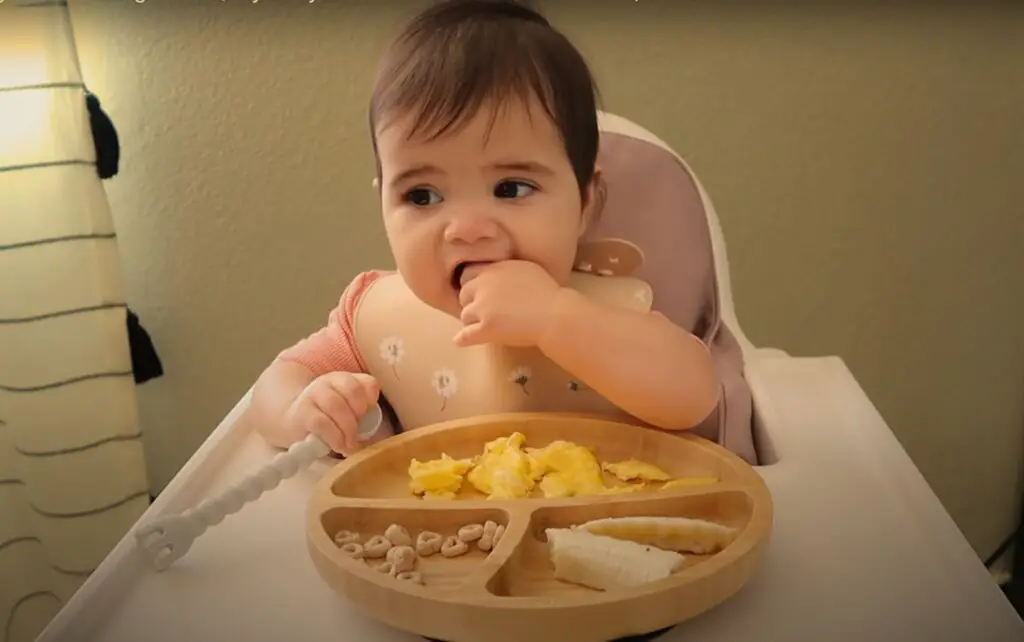
Discover easy-to-follow homemade green bean baby food recipes and learn how to make nutritious and delicious purees for your little one. With these simple steps, you can give your baby healthy, homemade green bean purees packed with essential nutrients.
Making your green bean baby food at home is a great way to introduce healthy and nutritious options into your little one’s diet. Here are a few simple and delicious homemade green bean baby food recipes that you can try:
Basic Green Bean Puree Recipe:
- Steam or boil fresh green beans until they are soft and tender.
- Blend the cooked green beans in a food processor or blender until you achieve a smooth consistency.
- Add a small amount of breast milk or formula to adjust the texture and taste if desired. This can help introduce different flavors to your baby’s palate.
Green Bean And Sweet Potato Mash Recipe:
- Steam green beans until they are soft, and at the same time, cook sweet potatoes until they are tender.
- Combine the cooked green beans and sweet potatoes in a bowl.
- Mash the ingredients until they are well combined, creating a flavorful and nutrient-rich baby food option.
Green Bean And Carrot Puree Recipe:
- Steam fresh green beans and carrots until they are soft and easily mashed.
- Blend the steamed green beans and carrots in a food processor or blender until you achieve a smooth puree.
- Experiment with different ratios of green beans to carrots to achieve your desired taste and texture.
These homemade green bean baby food recipes are not only nutritious but also allow you to have control over the ingredients used. By making your baby food, you can ensure your little one gets healthy and natural options as they explore new flavors and textures.
So go ahead and give these recipes a try, and watch your baby enjoy their homemade green bean baby food!
Storing And Serving Green Bean Baby Food
Discover how to make and store homemade green bean baby food with ease. This comprehensive guide provides step-by-step instructions for preparing and serving nutritious green bean puree to satisfy your little one’s taste buds and nutritional needs.
Making green bean baby food is a great way to introduce nutritious and tasty options to your little one’s diet. Once you have prepared the puree, it’s important to properly store and serve it to ensure its freshness and safety for your baby.
Here are some tips for storing and serving green bean baby food:
Proper Storage Techniques To Maintain Freshness:
- Immediately transfer the green bean puree into storage containers after cooking and blending.
- Use airtight containers or BPA-free freezer bags to prevent moisture and air from reaching the puree.
- Label each container with the date of preparation to keep track of freshness.
Freezing Green Bean Puree In Ice Cube Trays For Individual Portions:
- Pour the green bean puree into ice cube trays, filling each cube evenly.
- Place the filled ice cube tray in the freezer and allow the puree to freeze completely.
- Once frozen, remove the green bean puree cubes from the trays and transfer them into a labeled freezer-safe bag or container.
Serving Green Bean Baby Food Safely:
- Before feeding your baby, ensure the puree has been properly thawed.
- Thaw the frozen green bean puree in the refrigerator overnight or overnight.
- Once thawed, heat the puree by microwaving it briefly or gently warming it on the stovetop.
- Stir the puree well to ensure even temperature distribution.
Thawing Frozen Puree In The Refrigerator Before Reheating:
- Remove the desired amount of green bean puree cubes from the freezer and place them in a covered container in the refrigerator.
- Allow the cubes to thaw slowly in the refrigerator until they are soft and ready for reheating.
- Never refreeze previously frozen and thawed puree.
Using A Clean Spoon Or Silicone Spoon Feeder For Feeding:
- Choose a clean spoon or a silicone spoon feeder specifically designed for babies.
- Avoid using metal spoons as they may injure your baby’s delicate gums and teeth.
Following these storage and serving tips, you can ensure your homemade green bean baby food remains fresh, nutritious, and safe for your little one. Enjoy providing your baby with homemade goodness while promoting healthy eating habits!
Introducing Green Bean Baby Food To Your Little One
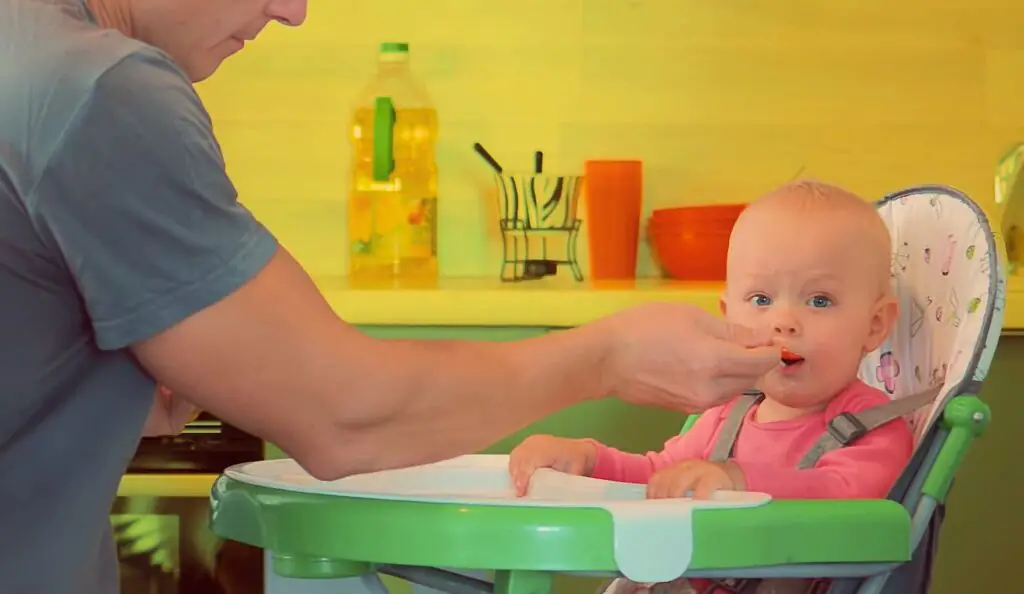
Discover the easy steps to make green bean baby food and introduce it to your little one. This guide provides simple instructions for preparing nutritious homemade baby food, from steaming the beans to pureeing them.
Introducing solid foods to your baby is an exciting time filled with new tastes and textures. There are a few important things to remember to ensure a smooth transition for your little one when it comes to green bean baby food.
Below, we’ll discuss how to gradually introduce green bean baby food, monitor for allergies or sensitivities, and explore different flavor combinations to expand your baby’s palate.
Gradual Introduction And Monitoring For Allergies Or Sensitivities:
- Start by offering your baby small amounts of green bean puree, allowing their taste buds to adjust to the new flavor.
- Observe your baby for adverse reactions such as rashes, vomiting, or diarrhea. It’s important to monitor them closely during this initial introduction phase.
- If you notice any unusual reactions or concerns, don’t hesitate to consult your pediatrician for further guidance.
Starting With Small Amounts And Observing For Any Adverse Reactions:
- During a feeding session, begin by offering your baby a spoonful or two of green bean puree.
- Watch closely for discomfort or digestive issues that may indicate an allergy or sensitivity.
- If your baby seems to adjust well, gradually increase the amount of green bean puree over time.
Consulting A Pediatrician If Any Concerns Or Reactions Occur:
- If you notice any adverse reactions or concerns, seeking professional advice is crucial.
- Contact your pediatrician, who can provide proper guidance and help determine if the reaction is due to an allergy or sensitivity.
- They may recommend specific tests or suggest alternative foods to explore.
Mixing Green Bean Puree With Other Fruits And Vegetables:
- Consider mixing green bean puree with other fruits or vegetables to add variety to your baby’s diet.
- Try combinations like green beans and sweet potatoes, green beans and carrots, or green beans and apples.
- This can help expose your little one to different flavors and provide a wider range of nutrients.
Combining Green Beans With Other Flavors To Expand Your Baby’s Palate:
- As your baby becomes more accustomed to green bean puree, gradually introduce new flavors to expand their palate.
- Combine green beans with herbs like dill or basil, or blend them with garlic or ginger for added taste.
- Remember to introduce these new flavors one at a time to easily identify any potential allergies or sensitivities.
Creating New Combinations And Textures As Your Baby Grows:
- As your baby grows, you can start introducing more textured foods.
- Gradually move from purees to mashed green beans, then to finely chopped or mashed green bean dishes.
- You can also mix cooked green beans with well-cooked rice or pasta, creating different combinations and textures to keep mealtime interesting.
By following these steps, you can make introducing green bean baby food a positive experience for your little one. Remember to take it slow, monitor for adverse reactions, and consult your pediatrician if you have any concerns.
Get creative with flavors and textures to expand their palate and foster a love for nutritious foods as they grow.
Frequently Asked Questions On How To Make Green Bean Baby Food?
What Mixes Well With Green Beans For Baby Food?
Green beans can be mixed well with other veggies or fruits like carrots, sweet potatoes, or apples for baby food.
How To Make Baby Food Out Of Canned Green Beans?
To make baby food from canned green beans, puree the beans in a blender or food processor until smooth.
Can Babies Have Pureed Green Beans?
Yes, babies can have pureed green beans as a diet.
How Do I Get My Baby To Eat Green Bean Puree?
Encourage your baby to eat green bean puree by offering it in small amounts during meal times.
Conclusion
Green bean baby food is a nutritious and easy-to-make option for introducing your little one to solid foods. By following the simple steps outlined in this blog post, you can ensure your baby receives all the essential nutrients they need for healthy growth and development.
Remember to select fresh green beans free from any blemishes or signs of spoilage. Steam or boil them until tender, then blend or mash them into a smooth puree. You can even create a variety of flavors by adding complementary fruits or vegetables.
Making green bean baby food gives you full control over what goes into your child’s diet and is a cost-effective alternative to store-bought options. So why not try it and give your baby a nutritious and delicious start to their solid food journey?

